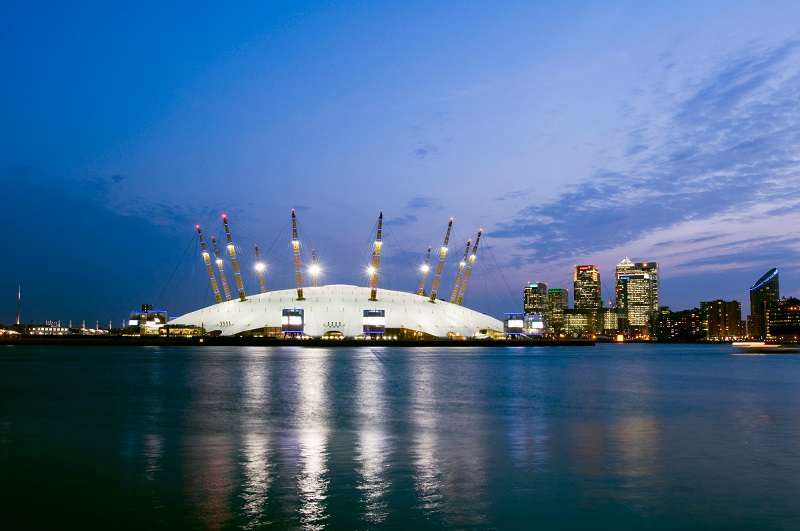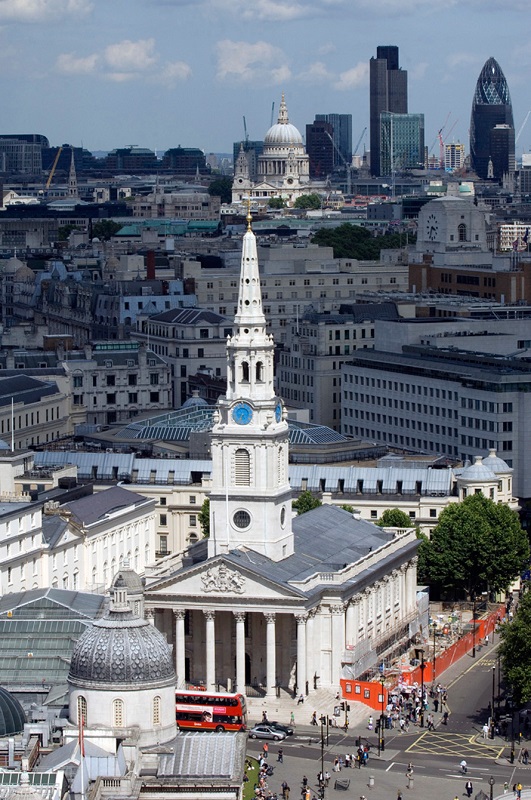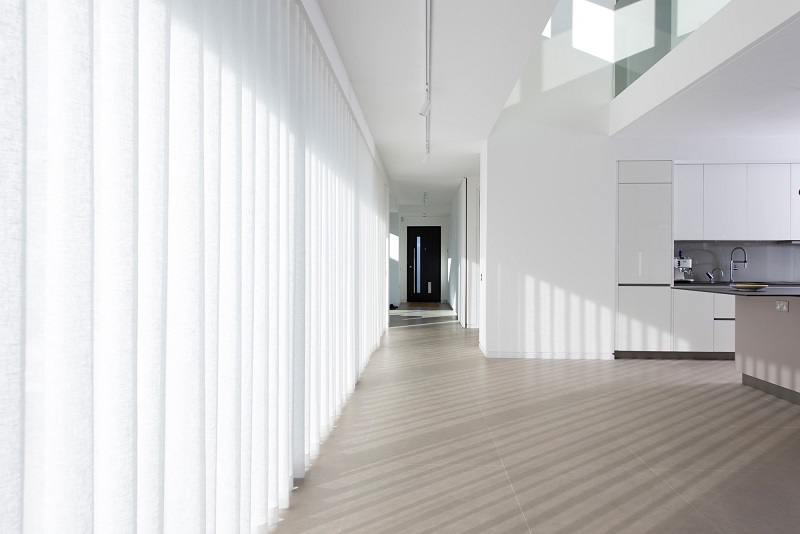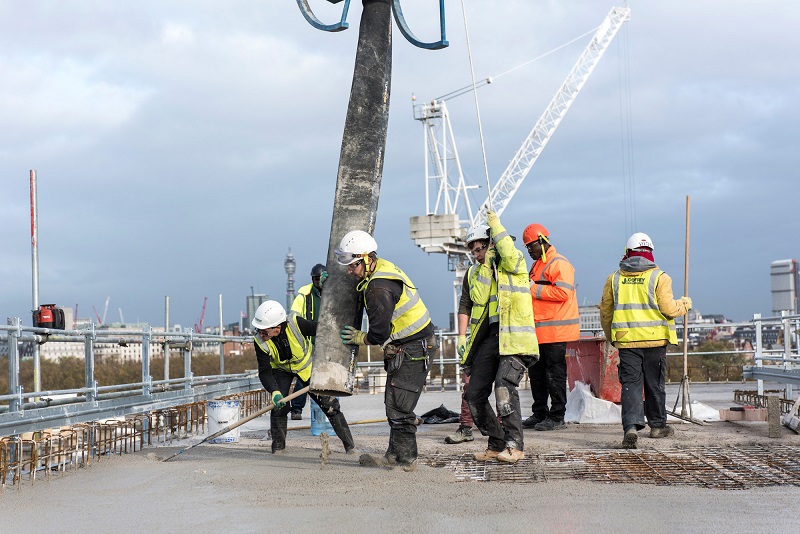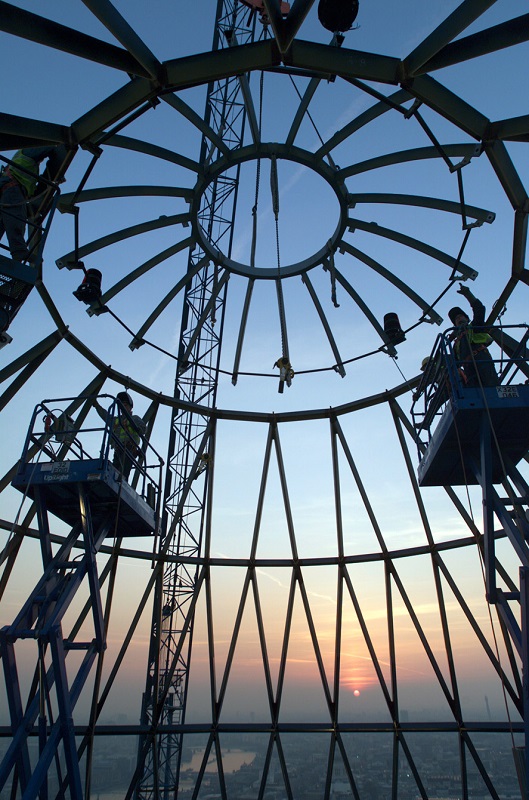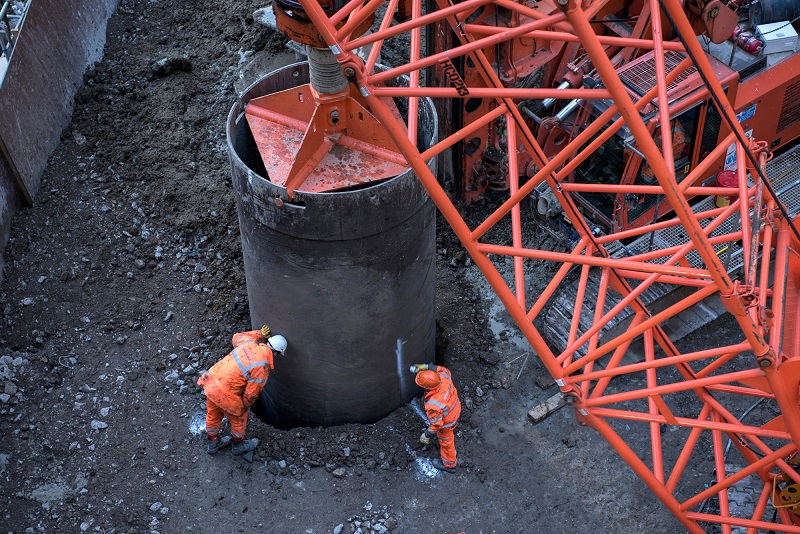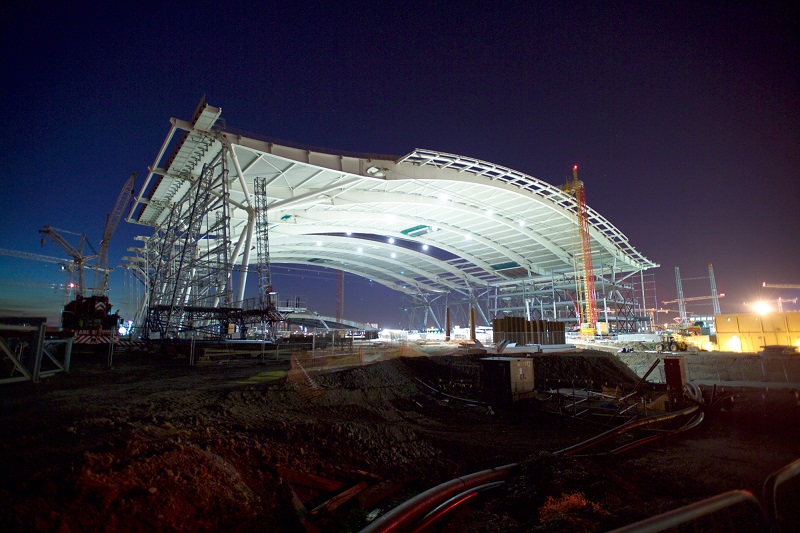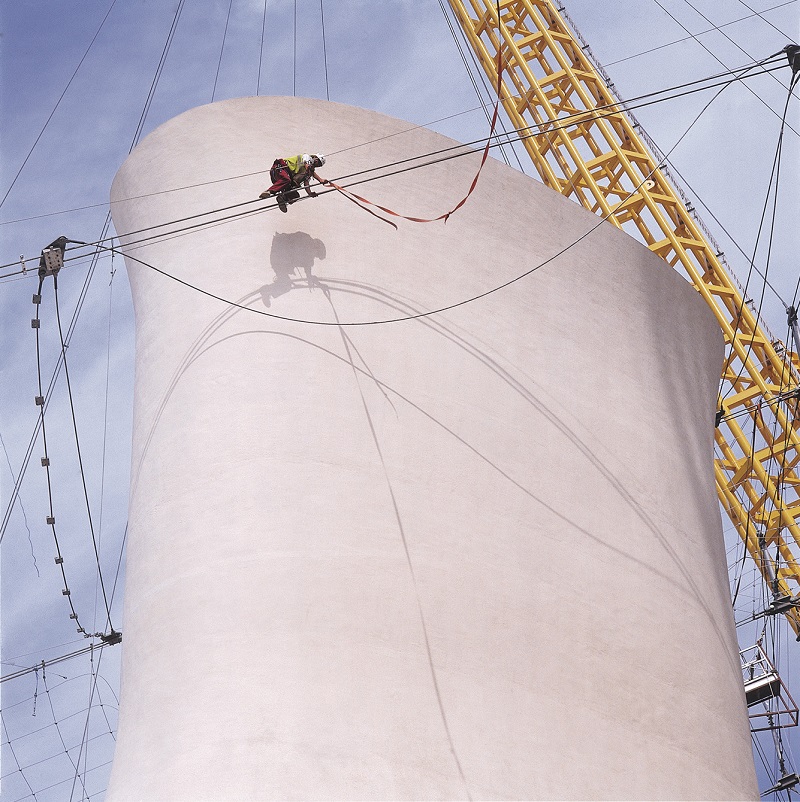Main author
Michael BrooksGrant Smith - Architectural photographer
(The O2, for Rogers Stirk Harbour + Partners)
Grant Smith is an internationally acclaimed architectural and construction photographer. Australian born, he has lived and worked in London since 1983 and has extensive knowledge of London's architecture. His body of work includes some of the world's iconic structures: the Pont de Normandie, second Severn Crossing, the Sydney Harbour tunnel, the Millennium Bridge, the Millennium Dome and the Gherkin in London.
He is commissioned by all sectors of the industry including design companies, magazines, architects, contractors and engineers. His portrait work takes him beyond the architectural and construction industry and into all sectors of commerce.
He was Chairman of the Association of Photographers for 2 years from 2001 to 2003. He has written articles on the subject of the repeal of Section 44, and been involved in the organisation 'I'm a Photographer, Not a Terrorist' which campaigns for photographers' rights to shoot in public.He also runs photo tours of the City of London for Open City.
Grant answered Designing Buildings Wiki's questions about his career-to-date.
| Designing Buildings Wiki (DBW): How did you get started in photography? |
Grant Smith (GS): I began working as a printer in black & white, then printing colour at Val Foreman's studio in Melbourne. Foreman was Australia's leading industrial photographer during the 70's. Offered work painting his studio, on completion he asked if I could stand in for his black & white printer. With no previous experience, but a keen desire to learn, I was printing large mural size display prints of industrial scenes.
(St. Martin-In-the-Fields with St. Paul's for Eric Parry Architects)
| DBW: What was it that drew you to architectural photography in particular? |
GS: While living in Australia, I had the opportunity to illustrate a reprint a book on Australian architecture, 'The Walls Around Us' by the writer and architect, Robin Boyd. It provided the springboard for my further learning and development as an architectural photographer. I left for Europe with a checklist of architectural sites from history.
Arriving in Paris, I was drawn to this extraordinary building near Les Halles. My appreciation of modern architecture was stimulated by my first sight of this building, which of course was Rogers & Piano's Pompidou.
| DBW: What is your favourite piece of equipment to work with? |
GS: My favourite camera was the Linhof Technikardan 5x4, which neatly folded away into a backpack. I carried a smaller pack on my front loaded with darkslides. That camera fitted with a 90 mm Schneider lens was a beautiful piece of kit.
Now I exclusively use a Nikon DSLR with a couple of shift lenses and the excellent 14 mm – 24 mm f2.8 lens. At present I have a D810, which fits comfortably into one smaller backpack, along with all the lenses.
(Private house, Amersham for Jestico + Whiles)
| DBW: What do you find the most challenging part of being an architectural photographer? |
GS: The British weather is the hardest element to anticipate in this job. However when the light is good, even in winter, it is sublime. Arriving on site and spending time moving temporary fences, or sweeping floors is something you have to allow time for.
(Concrete pour at Verde, Victoria for Tishman Speyer)
| DBW: What has been your favourite commission to work on? |
GS: It has been those that I follow for the period of construction, from demolition of existing buildings to fit out of the new structure. I have had the chance to build up a narrative of works on the Millennium Dome (now the O2), the Gherkin, Terminal 5 and the Millennium Bridge (the wobbly one). It is a great opportunity to understand the process of construction and build friendships.
Currently I'm documenting the construction of The Scalpel in the City of London. There are also the one-off shoots I have enjoyed such as Ian Ritchie Architects' Sainsbury Wellcome Centre for Neural Circuits and Behaviour near Euston, and a private house designed by Jestico + Whiles in Amersham.
(Placing the spider web of steel on the top of the Gherkin for Swiss Re)
| DBW: Is there a building you would really like to get a chance to shoot? |
GS: I would love to shoot Le Corbusier's Ronchamp Chapel.
| DBW: What advice would you give to an aspiring architectural photographer? |
GS: Look at images of buildings, whether they be paintings or photographs. For example, 18th century Dutch urban landscapes are beautiful examples of perspective and light, and there are so many good practitioners of architectural photography. Feeding your visual instincts helps you define your own style, your own way of working and will help inform you of the clients you'd like to work with.
(Piling at The Scalpel for Wordsearch)
(Night time view of Terminal 5 under construction for Rogers Stirk Harbour + Partners)
(During construction of the Millennium Dome for Rogers Stirk Harbour + Partners)
All images copyright of Grant Smith.
For Grant Smith's website and for contact details, see here.
Follow Grant Smith on Twitter here.
[edit] Related articles on Designing Buildings Wiki
- Anthony Weller - Architectural photographer.
- Architectural photography.
- Computer aided design CAD.
- Construction cameras.
- Heathrow Terminal 5.
- How to commission architectural photography.
- Interview with Paul Grundy - Architectural photographer.
- Millennium Dome.
- Photographing buildings.
- Samples and mock-ups.
- Simon Kennedy - Architectural Photographer.
- Student resources.
- The Gherkin.
Featured articles and news
Latest Build UK Building Safety Regime explainer published
Key elements in one short, now updated document.
UKGBC launch the UK Climate Resilience Roadmap
First guidance of its kind on direct climate impacts for the built environment and how it can adapt.
CLC Health, Safety and Wellbeing Strategy 2025
Launched by the Minister for Industry to look at fatalities on site, improving mental health and other issues.
One of the most impressive Victorian architects. Book review.
Common Assessment Standard now with building safety
New CAS update now includes mandatory building safety questions.
RTPI leader to become new CIOB Chief Executive Officer
Dr Victoria Hills MRTPI, FICE to take over after Caroline Gumble’s departure.
Social and affordable housing, a long term plan for delivery
The “Delivering a Decade of Renewal for Social and Affordable Housing” strategy sets out future path.
A change to adoptive architecture
Effects of global weather warming on architectural detailing, material choice and human interaction.
The proposed publicly owned and backed subsidiary of Homes England, to facilitate new homes.
How big is the problem and what can we do to mitigate the effects?
Overheating guidance and tools for building designers
A number of cool guides to help with the heat.
The UK's Modern Industrial Strategy: A 10 year plan
Previous consultation criticism, current key elements and general support with some persisting reservations.
Building Safety Regulator reforms
New roles, new staff and a new fast track service pave the way for a single construction regulator.
Architectural Technologist CPDs and Communications
CIAT CPD… and how you can do it!
Cooling centres and cool spaces
Managing extreme heat in cities by directing the public to places for heat stress relief and water sources.
Winter gardens: A brief history and warm variations
Extending the season with glass in different forms and terms.
Restoring Great Yarmouth's Winter Gardens
Transforming one of the least sustainable constructions imaginable.







